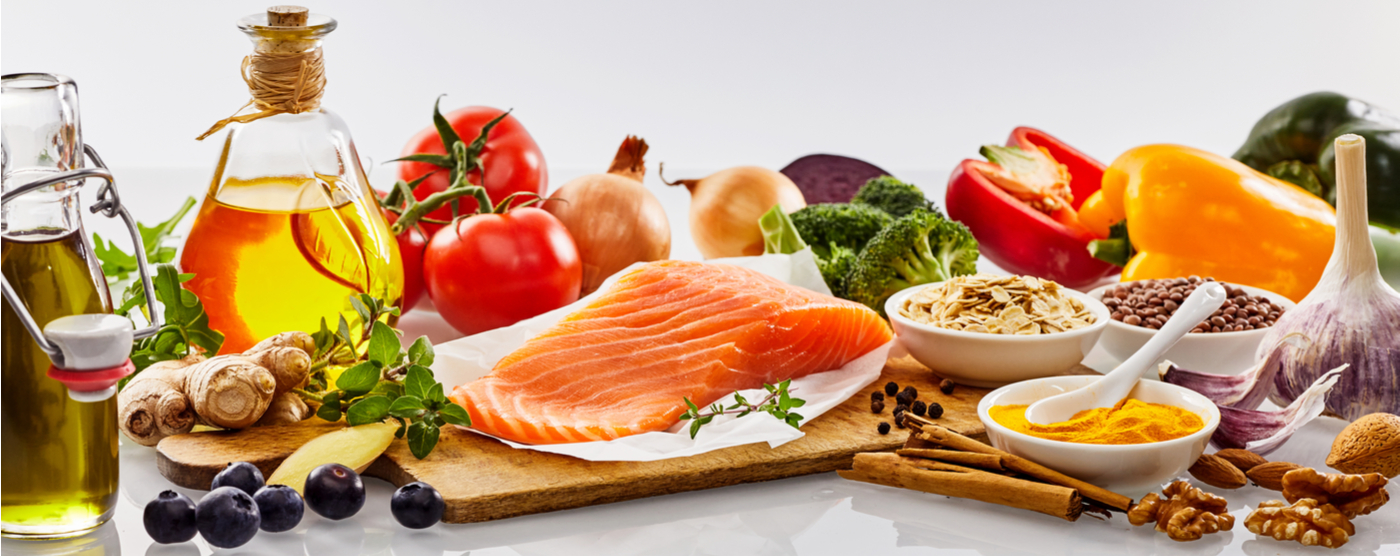When it comes to a lifetime of beautiful skin there are things that we can control and some we cannot. Age and genetics are out of our control, however there are many ways for us to choose habits that promote our best-looking & healthiest skin. From prevention of sun damage with topical sunscreens and maintaining regular skincare regimens, to state-of-the-art medical and cosmetic treatments today, we have many ways to look and feel our best for decades. In this blog post we will focus on foods for better skin.
Because our skin is the body’s largest organ, what we consume can have a big effect on how are skin looks, feels and functions. Eating a nutrition-dense diet and drinking sufficient water is recommended for establishing, improving and maintaining overall health. However, as what we eat and drink affects our skin, some foods are better than others at supporting renewal, elasticity and resilience.
Some of our favorite stellar skin-supporting foods are provided below as a suggestion to add your grocery list:
Collagen-building Foods for better skin
Your skin’s structure is made from connective tissue composed of an abundant protein found throughout the entire body known as collagen. After age 35 our body’s ability to produce collagen begins to wane, and this contributes to formation of wrinkles and sagging skin. To combat this natural decline, there are the foods that are aids to naturally producing more collagen.
Foods rich in omega-3 fatty acids increase the production of collagen. They also help decrease free radical formation and can reduce the risk of skin cancer.
Lycopene Rich Red Veggies
Red fruits and vegetables are rich in lycopene. Tomatoes are an excellent source. The lycopene concentration found in cooked tomatoes is higher than that in fresh, raw tomatoes. Lycopene can scavenge free radicals and block visible and ultraviolet light. It also helps improve cell function and prevents DNA damage within skin cells.
Foods for better skin elasticity and hydration
Beans are rich in hyaluronic acid, which helps skin hydration. This keeps skin moist and smooth, and aids elasticity to promote firmer skin.
 Vitamin A-rich Foods:
Vitamin A-rich Foods:
Vitamin A increases collagen production and also slows the breakdown of collagen.
Antioxidants
Free radicals are a byproduct of a healthy metabolism and help our body’s normal defense mechanism. Free radicals fight against bacteria and viruses. However, when they are produced in excess, they can be damaging to our cells and can contribute to the aging process. Foods rich in antioxidants protect our cells and can reduce the risk of disease. 
Isoflavone-rich Foods for better skin
The protein-rich soybean is proven to help lower cholesterol and reduce the risk of heart disease. It has also been linked to improvement in collagen production and wrinkle prevention.
Vitamin C-rich Foods for better skin
Vitamin C reduces wrinkle formation by amping up collagen production. It is also a powerful antioxidant that can help protect the skin against sun damage, It can lead to lightening of brown spots on the face, and when used with a sunscreen, it allows the SPF to work more efficiently during the day.
Protein-rich Foods
Skin, hair and nails are primarily made of proteins: keratin, collagen and elastin. These are some of the best protein sources.
Sulfur-rich Foods
Since ancient times, sulfur has been known to improve skin issues. It helps reduce skin oil production, erythema, acne and can prevent formation of clogged pores.
Zinc-rich Foods for better skin
Zinc is a trace mineral that helps in the production of enzymes. It is an antioxidant and helps neutralize the effects of free radicals while promoting collagen synthesis.
Low Glycemic Index Foods for better skin
Alcohol and Skin
Overdoing it with alcohol can mean more than a hangover. For your skin, the effects of alcohol include dehydration, the appearance of blood vessels, and other potential adverse reactions from over-exposure to toxic chemicals associated with fermentation. The lower the intake, the decrease in harm to the skin.
Some nutritionists advise that short of giving up alcohol, potato vodka is considered the “best choice” because it processes through the body most quickly. Medical studies have found that that resveratrol, an antioxidant found in grape skins for red wine, improves heart health. There is also evidence it helps with anti-aging in the skin.
So, our recommendation is, “everything in moderation.”
The Healthy Skin Great Grocery Takeaway
In addition to these foods for better skin we’ve outlined, remember these four general guidelines:
- Choose natural, nutrient-dense foods: fruits, vegetables, whole grains, nuts, fish and lean protein.
- 1/2 to 1/4 of your plate should be vegetables at any given meal.
- Eat the colors of the rainbow. Variety helps you get all the vitamins and minerals you need.
- Sleep, exercise and sunscreen are vital regardless of what you eat!
Signing off to the beauty of spring and a hop into treating skin from the inside,
Sara Greer, M.D.







